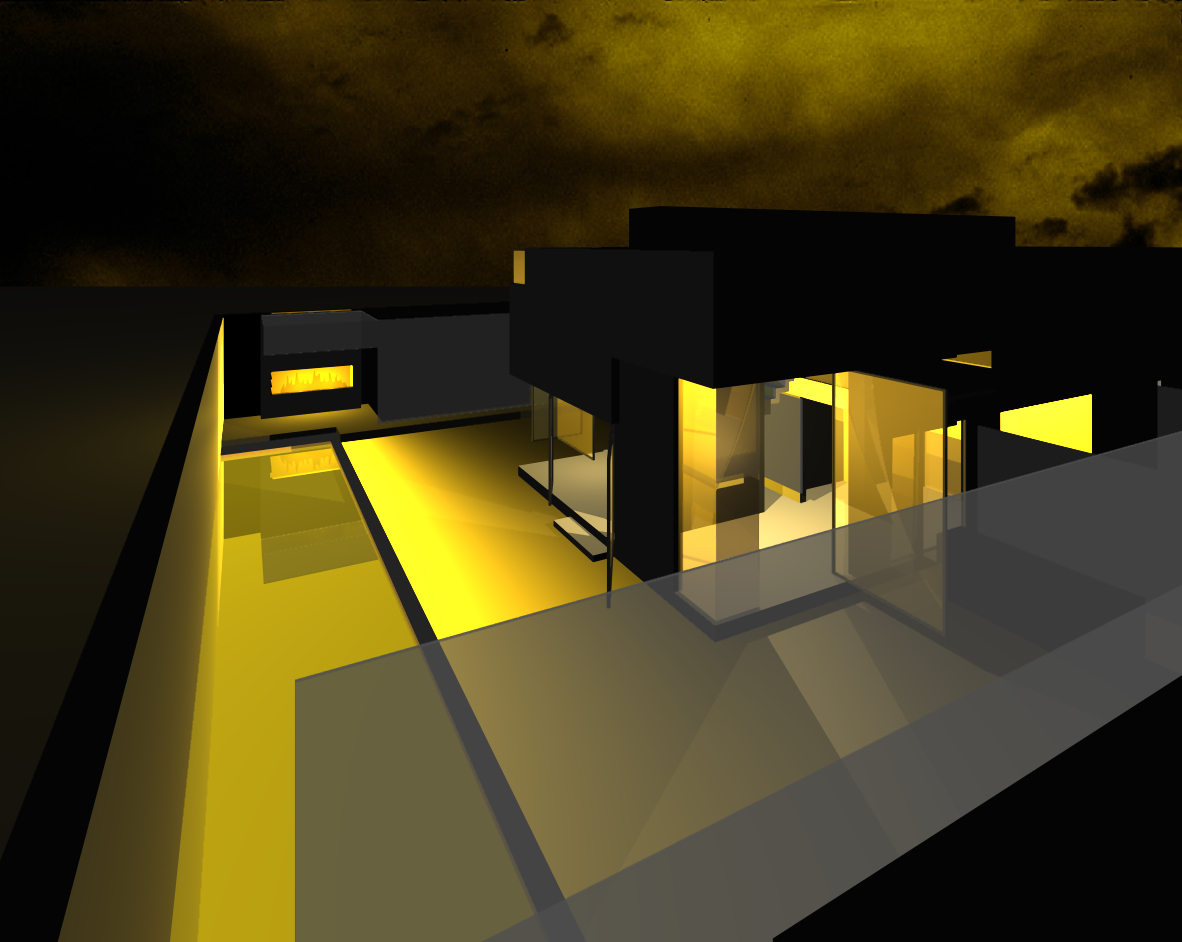karimou pavilion
Location : Niamey, Niger
The project design philosophy centers around two ideas: the first is Martin Heidegger’s “…buildings bring the earth as the inhabited landscape close to man and at the same time place the nearness of neighbourly dwelling under the expanse of the sky”. The between space gardens “between earth and sky, between birth and death, between joy and pain, between work and word” is the principal in which the project organizes itself and responds to the context of the city. By developing the exterior boundary wall as a zone of secondary space, (i.e. children’s bedrooms, guest areas, service areas) the project develops a dialogue between building as boundary wall (outside world), and building as (inhabited landscape). The gardens of the project become the “lived space” between earth and sky.
The second design concept is an exploration of concepts of music tonality, specifically that of Debussy. Unperceived symmetry, vertical organization = equal temperament, limited intervals and modulating scales. This approach provides an organization, sort of a complex musical sheet of grid paper, where the underlying principals are unperceivable.
Proportions of site are 25 meters by 30 meters (a proportion of 5 : 6) (a minor 3rd). The total area is 750 sm.
The first floor areas are as follows:
North boundary building 108 sm
South boundary building 54 sm (half of north)
Total boundary buildings = 162 sm
Main building (first level) 81 sm (second level) 81 sm = 162 sm
Total house interior area: 324 sm divided by 6 = 54 (size of south building)
Highly structured
Secret world
Serene and introspective
The main building is a 9 m by 9 m square in which horizontal and vertical shifts of limited intervals have been applied. The second floor is shifted completely to the west providing height in the living and dining areas, and providing a covered area to the front water garden. The first floor access to the second floor is through two sky gardens (sleep and bath). These sky gardens have low windows back into the living / dining areas.
The living space boundaries are formed by the living garden. Wrapping three sides and the fourth (west) being completed by the sky gardens. The moving fabric wall can completely close off the family or kitchen areas extending the living garden’s fabric boundary wall through the space. The first level is transitional space, gathering and uniting inside and out.
There is no “front door”. The garden is the door. The south and east walls of the living area consist of a large steel and glass vertical pocket door which completely retracts up into the wall above. When the door is closed, portions of it can swing open to provide flexibility in usage (shown on first level plan). There is a cloud box in the southeast corner of the living area ceiling. Providing a limited visual connection to the sky from within the living area.
The stairs up to the second floor are along a central raised chimney spine running east / west providing high operable clearstory windows for heat dissipation.
The second floor has no external relationships (windows). Views are controlled and are back through a large steel / glass pivot wall into the sky garden (for sleeping). The west wall of the master bedroom is glass and open to the vertical water garden, providing water, diffused light and when the glass is opened, naturally cooled air. The master bath is similarly private, with only a horizontally pivoting wall of steel / glass to the sky garden (bath) so when open, it works as a horizontal glass roof over the tub, allowing the tub to feel as though it is in the garden. The shower has a glass wall to the vertical water garden.
The palate of the house consists of four materials; light colored concrete / plaster, glass (clear or translucent), unpainted steel, and light colored fabric cloth (stretched over steel frame).






